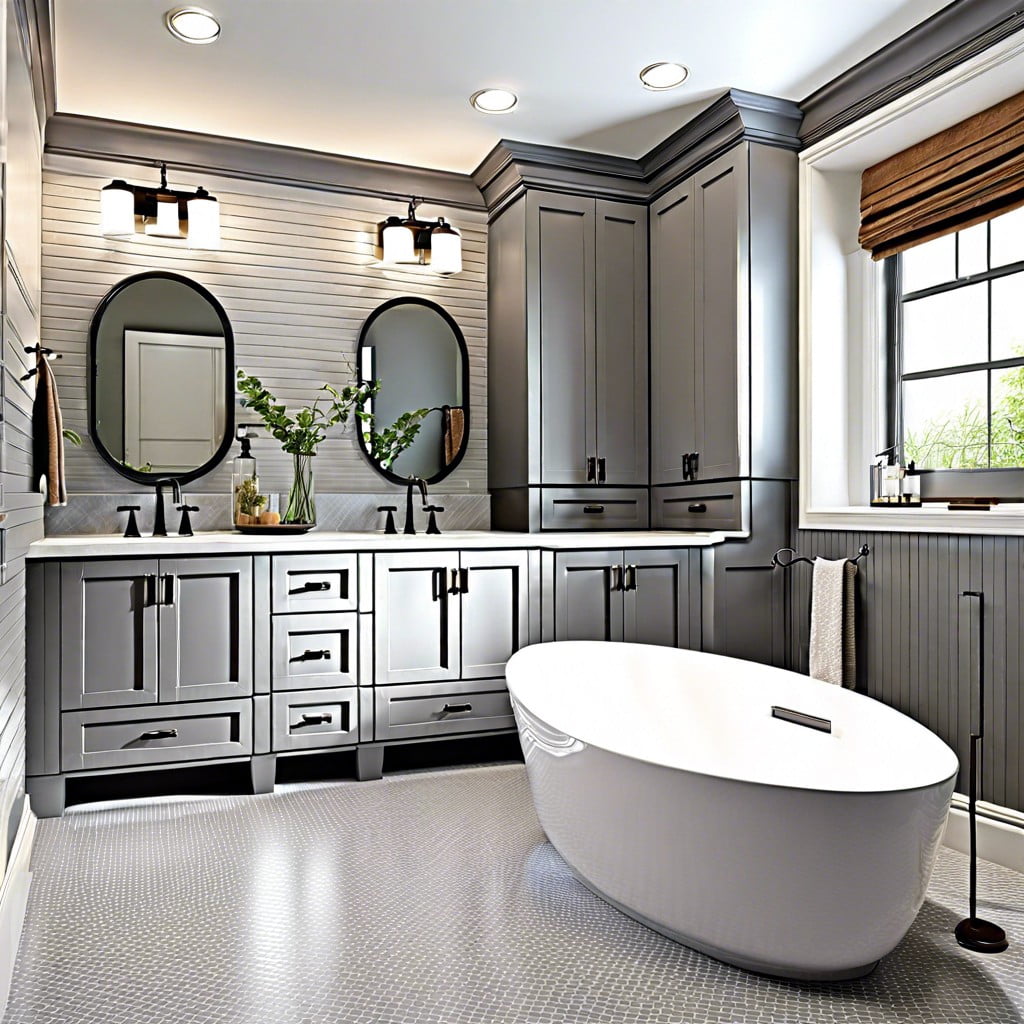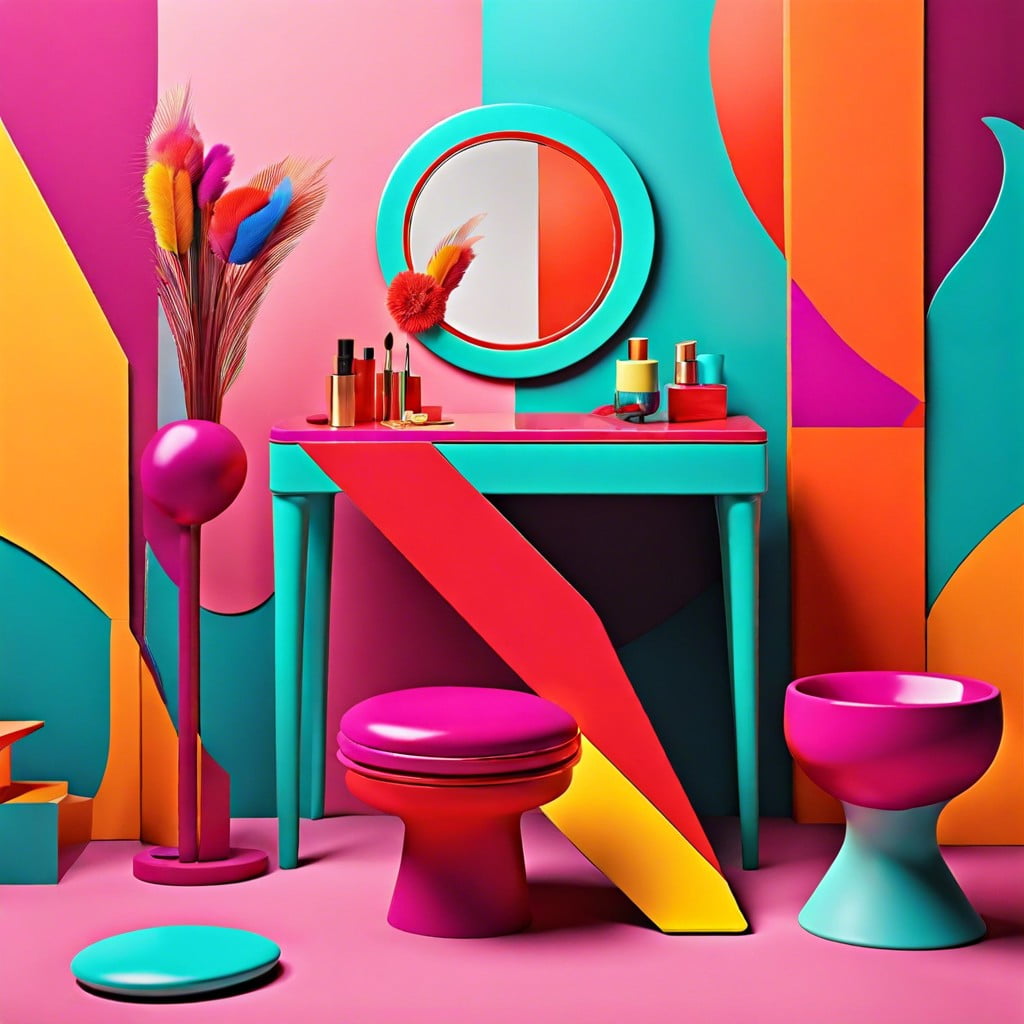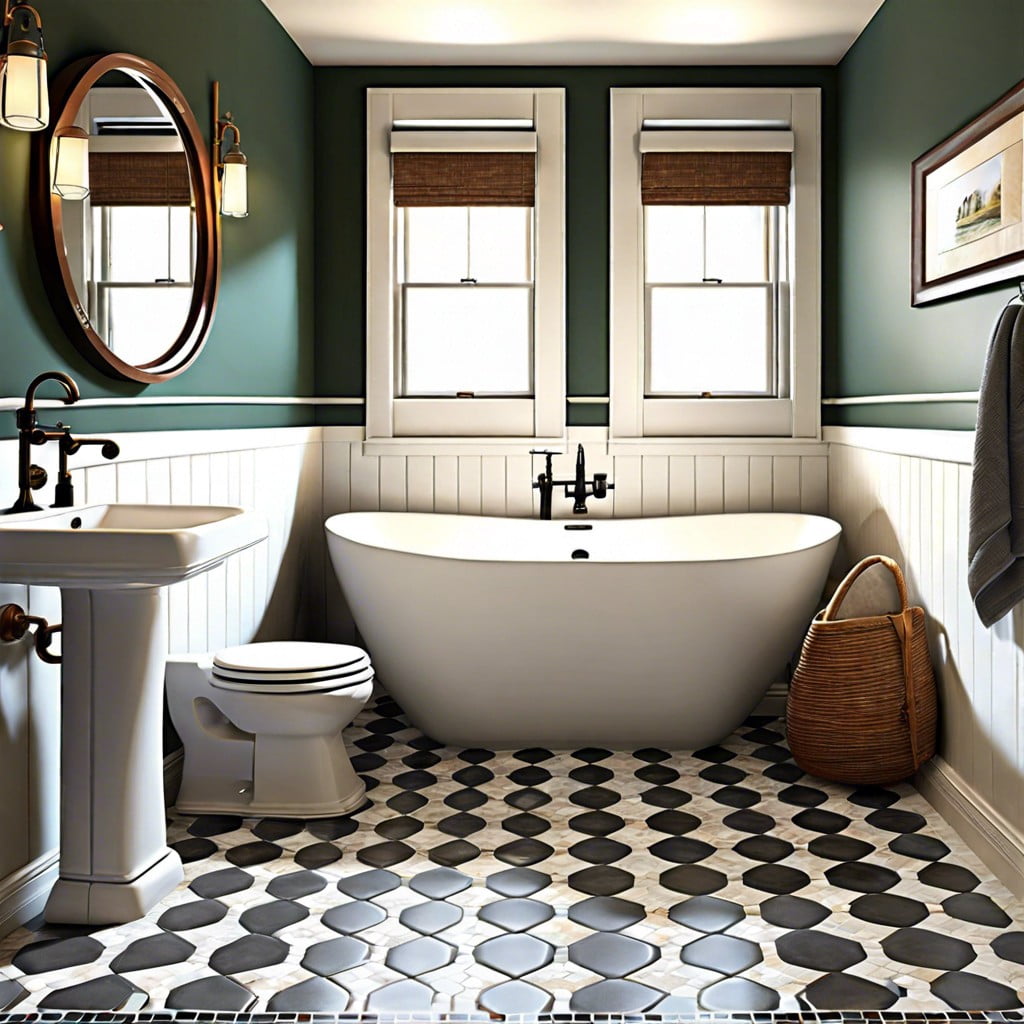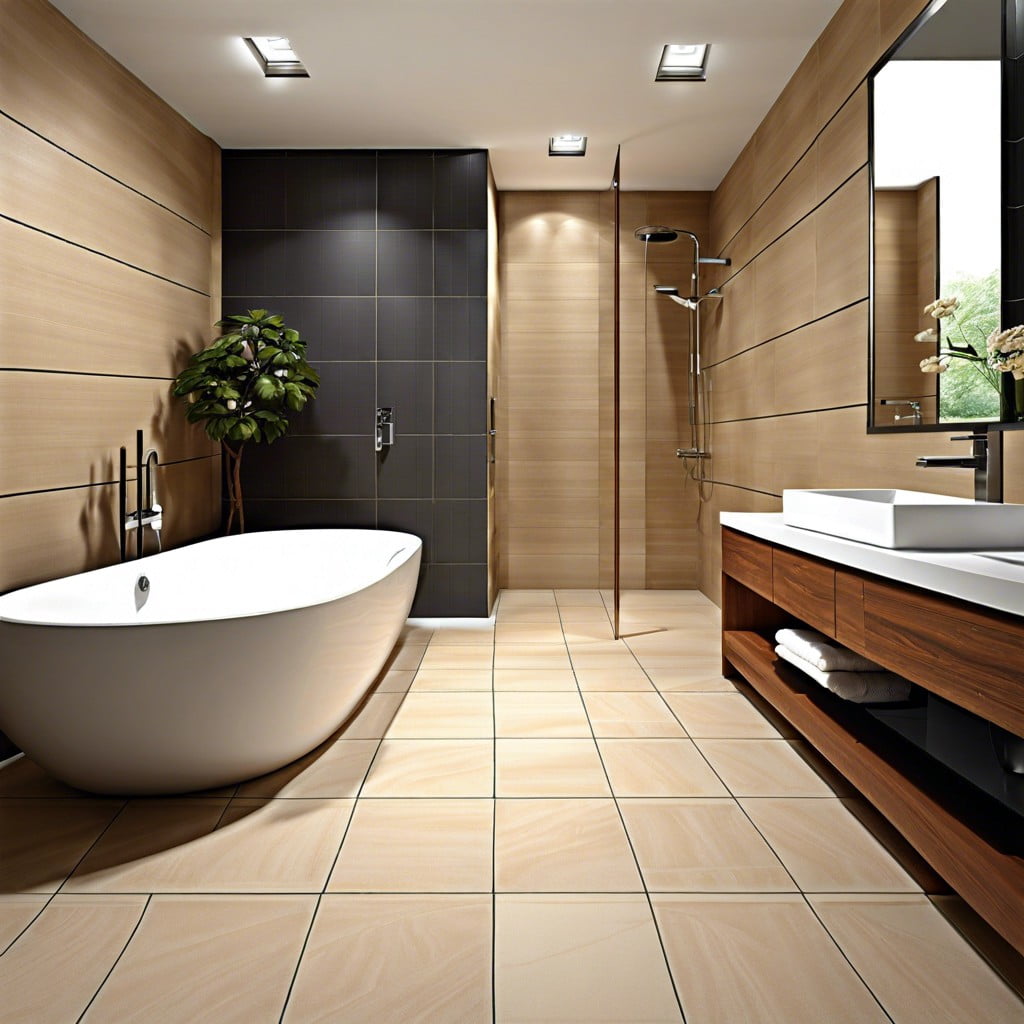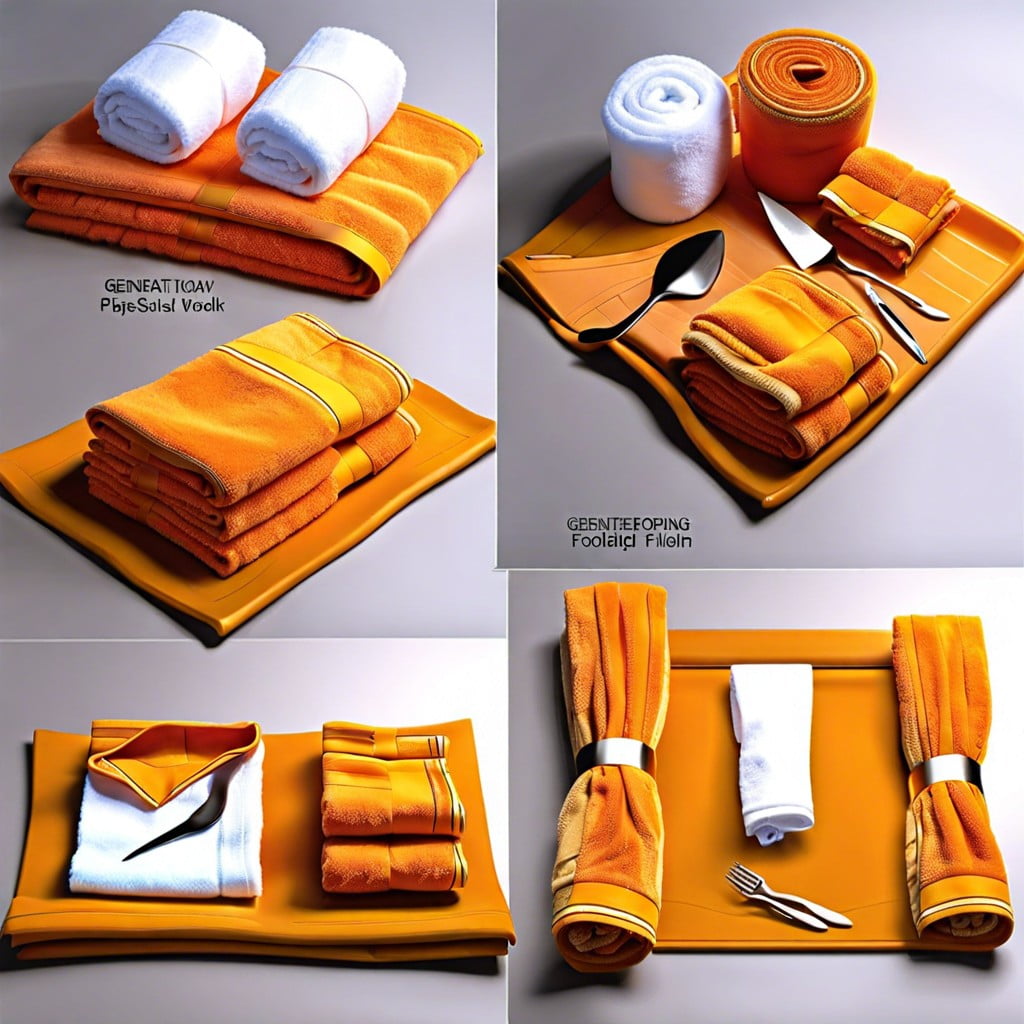Last updated on
A half bath, also known as a powder room, is a small bathroom that includes only a toilet and a sink, making it perfect for guests without the full amenities of a larger bathroom.
Key takeaways:
- Half baths have a toilet and sink, no shower or tub.
- Compact toilets and small sinks work best in half baths.
- Adding a mirror and adequate lighting can make the space feel larger.
- Half baths are convenient for guests and can increase home value.
- Lack of privacy and limited space are drawbacks of a half bath.
Definition of a Half Bath
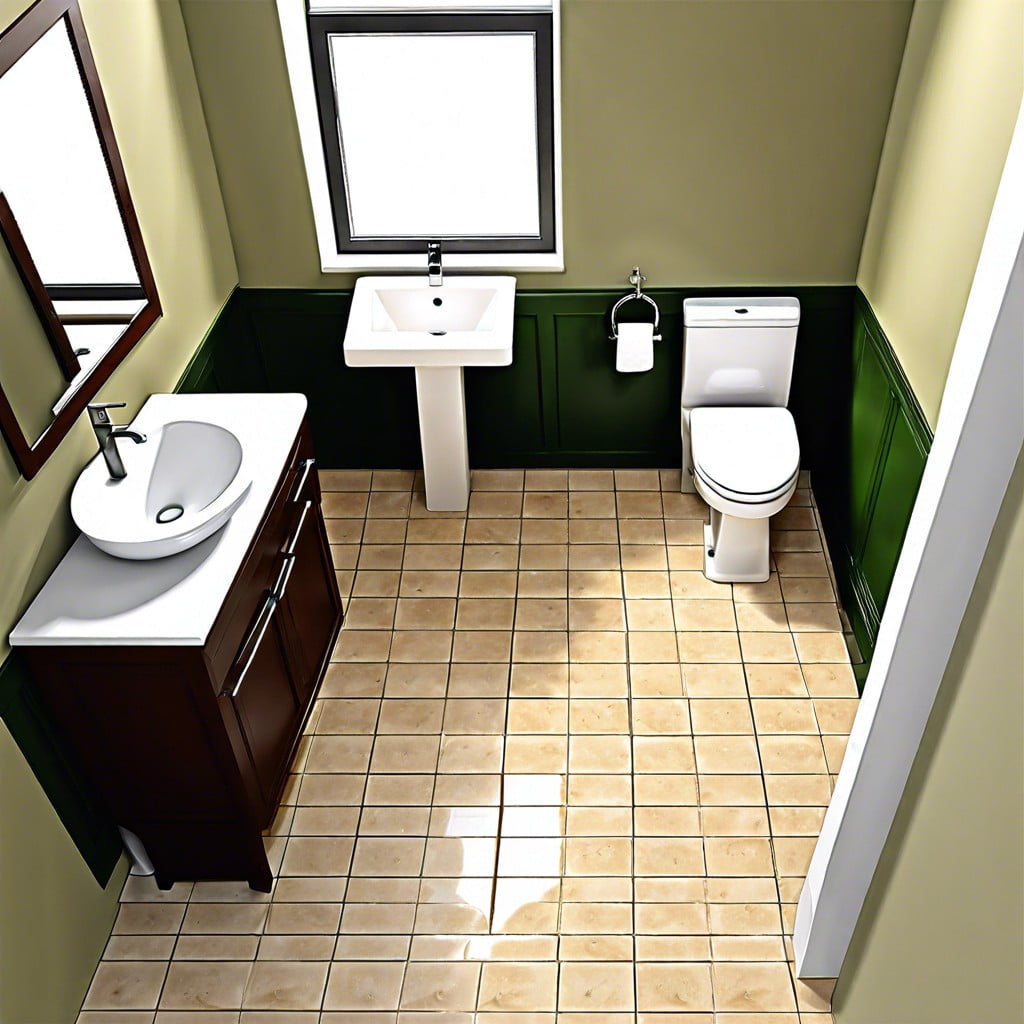
Looking for a simple breakdown? Let’s dive in. Think of a space that provides the essentials without the extra frills. A half bath typically consists of just a toilet and a sink. No shower, no tub, just the bare minimum to meet basic needs.
- Here’s the gist:
- Toilet: Obvious. It’s a must.
- Sink: Essential for hygiene.
- Sometimes a mirror: Handy for quick check-ups but not always included.
Picture a minimalist’s dream bathroom—quick, efficient, and functional. It serves the purpose without hogging too much space. If you’re expecting a pampering session or a bubble bath, you’re in the wrong room, my friend.
The purpose? Convenience for guests and easy access during those “gotta-go” moments. Plus, it keeps traffic out of your personal, full-scale bathroom.
Elements of a Half Bath
A half bath, also known as a powder room or guest bath, typically includes two essential components: a toilet and a sink.
First, let’s talk toilets. These are the indispensable thrones of a half bath. Compact models work best since space is usually limited.
Next up, the sink. Keep it small and functional. A pedestal sink is a popular choice for its sleek, space-saving design.
Consider adding a mirror above the sink. It’s not just for checking your hair; it also makes the space feel larger.
Adequate lighting is crucial. Nobody wants to navigate a dimly lit powder room. Wall sconces or overhead lights brighten up the space.
Add a splash of your personal style. A pop of color, a quirky wallpaper, or some stylish accessories can turn a bland half bath into a mini-oasis.
Finishing touch: ventilation. A small exhaust fan keeps odors at bay and prevents moisture buildup.
There you have it, the essentials to make your half bath both functional and fabulous.
Benefits of a Half Bath
Having a half bath in your home can be like discovering you had a secret superpower all along. For one, it’s incredibly convenient. Imagine not needing to trek upstairs just to wash your hands or, heaven forbid, take a quick bathroom break during the big game.
Half baths also help keep the main bathroom free when you have guests over. It’s less awkward for everyone if visitors don’t have to navigate a tornado of towels and toiletries. This way, your main bathroom can remain your private sanctuary.
And let’s talk real estate value. Adding a half bath can significantly boost your home’s appeal to potential buyers. It’s a small addition with big returns. You’re essentially adding an extra slice of luxury without the heavy price tag.
Finally, they’re great for maximizing space. You can squeeze a half bath into a corner or under the stairs, making efficient use of those awkward nooks and crannies. It’s like Tetris, but with plumbing.
Drawbacks of a Half Bath
One major downside is the lack of a shower or bathtub. It’s essentially a glamorous pit stop, perfect for guests but not for anyone looking to freshen up. This makes it less versatile than a full bath.
Space might also be an issue. Half baths are often tucked into tight corners, under stairs, or in other nooks. It’s like fitting a sumo wrestler into a phone booth—functional, but not spacious.
Resale value is another consideration. While adding a half bath can increase home value, it doesn’t have the same impact as a full bath. It’s a bit like upgrading from a tricycle to a bicycle when what you really wanted was a motorbike.
Lastly, privacy can be a factor. Half baths are frequently placed in common areas. Imagine a party guest emerging from a bathroom suspiciously close to the kitchen—awkward, right?
Where to Add a Half Bath
Near the entryway, a half bath is a lifesaver for guests coming in from a long drive. No one wants to tour your kitchen looking for the facilities.
Underutilized closets and nooks offer hidden potential. Transform that dusty storage area into a convenient powder room and watch the magic unfold.
Basements, the forgotten realms, can benefit from a half bath too. Imagine not having to trek upstairs during your movie night intermission. Your popcorn will thank you.
Hallways work as well. At the end of a long corridor, a half bath can turn a mundane space into something truly practical and surprising.
The spaces under stairs may look cramped, but they can be ingeniously converted into quirky, yet functional half baths. Harry Potter would approve.
Cost of Building a Half Bath
Brace yourself for some wallet talk. Adding a half bath won’t exactly cost you your firstborn, but it isn’t pocket change either. Typically, expect to shell out anywhere from $3,000 to $10,000. I know, that’s a wide range, but there are several factors in play here.
First, location, location, location. If you’re plumbing through the walls of an ancient castle (okay, a 1920s bungalow), costs can skyrocket. Modern homes may be more forgiving on the checkbook.
Then there’s the question of fixtures. Are you opting for the golden throne of all toilets? Or can you live with something more… standard?
Don’t forget flooring and tiling. Marble tiles from Italy? Go ahead and max out that credit card. But if you’re cool with ceramic, you’ll save big.
Lastly, labor. You think you can DIY it? Unless you’re Bob the Builder, leave it to the pros. Their expertise comes at a cost but saves you a lot of headaches—and potential waterworks—in the long run.
There it is, the quick and dirty on costs. Remember, a penny saved is a penny you can spend on that fancy soap dispenser.
Recap
